Pro productions with the devices you (probably) already have
Live videography and producing high-quality videos have whizzed through the adoption lifecycle in a fraction of what it would take for something to gain universal acceptance twenty years ago (like signing up for an email address – anyone remembers that?).
First, it was only the cool kids streaming live.
Then, the big platforms invited a few lucky ones to test the waters… and twelve months later, the masses got involved…
Now you’re a “boomer” if you’re NOT doing a weekly live…
(As you’re reading this, over two and a half million people are viewing Twitch streams*.)
Even if… you have all that time and money to hire the pros for all your video and streaming needs; you may find that your videos are only seen by a handful and flop (or go viral and be seen by millions but that’s another blog post).
If you’re a brand, a solopreneur building a personal brand, a YouTuber, Tiktoker, or a videographer transitioning over to live streaming – using only mobile devices totally makes sense right now.
Studio-quality videos that don’t need a crew, a van, and several weeks to plan and produce (at the cost of thousands of dollars) are on everyone’s list for 2023.
What’s the learning curve for streaming live with mobile devices?
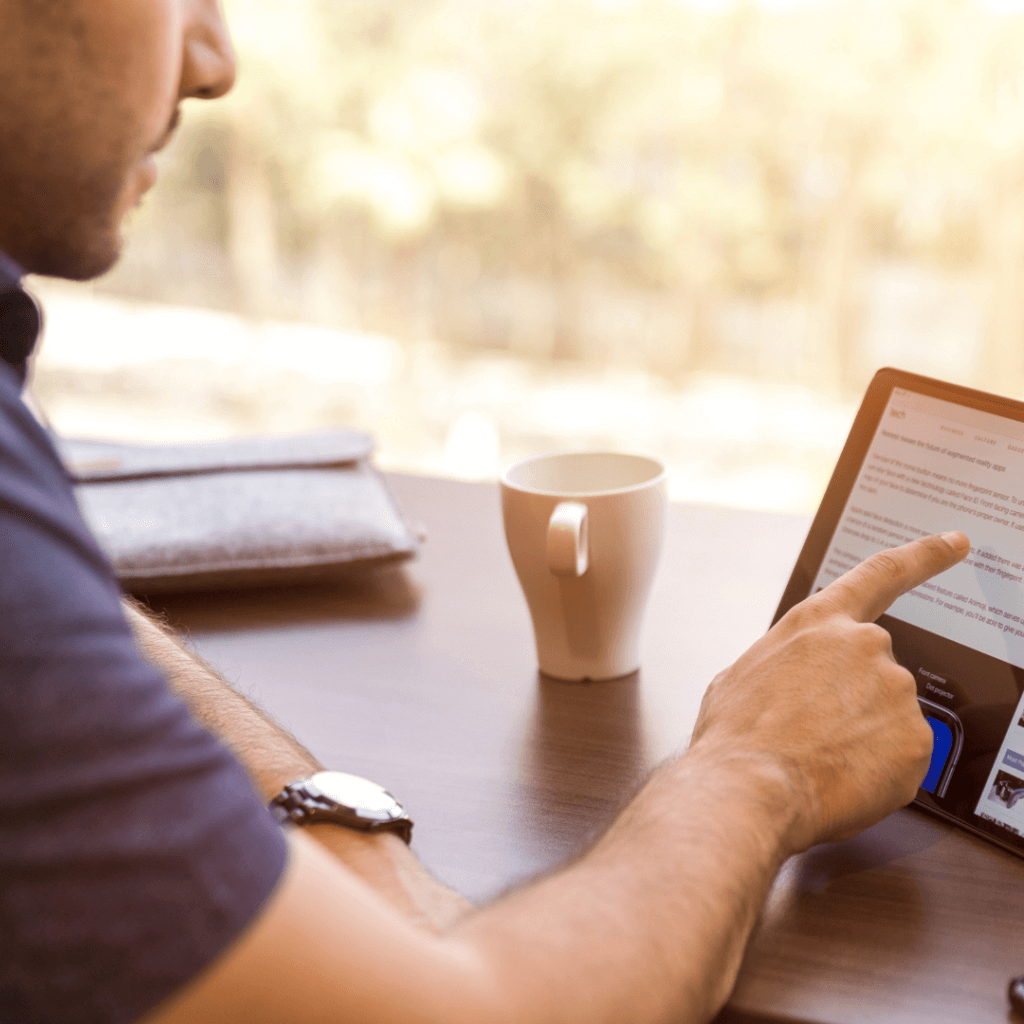
It’s clear that streaming makes sense for most people and brands.
Yet, there are *some* initial hurdles you’re going to have to jump before you make your first $100K.
However accessible streaming has become, you need to do some prep work and buy/borrow/beg/steal* (*joking – we’d never steal something we can easily borrow…) a few key pieces of equipment for studio-quality streams (that’ll get you those followers and make you six figures!).
“Am I too late/old to jump onto live streaming with mobile phones?”

Everything (that’s worth doing) has gone mobile-first in the last five years.
If you’ve been hiding in a remote location or just had your head down in Cal Newport’s “Deep Work” and turned away from social media in disgust (unless it’s an emergency…) you should absolutely start looking into what streaming can do to your biz.
You *know* you read most stuff on your mobile devices and only open the desktop if you:
- have to reply to your boss in a long email (and don’t want to make spelling mistakes) or
- You’re about to invest in an expensive luxury item you’d prefer to see in full HD on a large monitor before you press the buy button…
Until recently, you had two options to speak to your audience live:
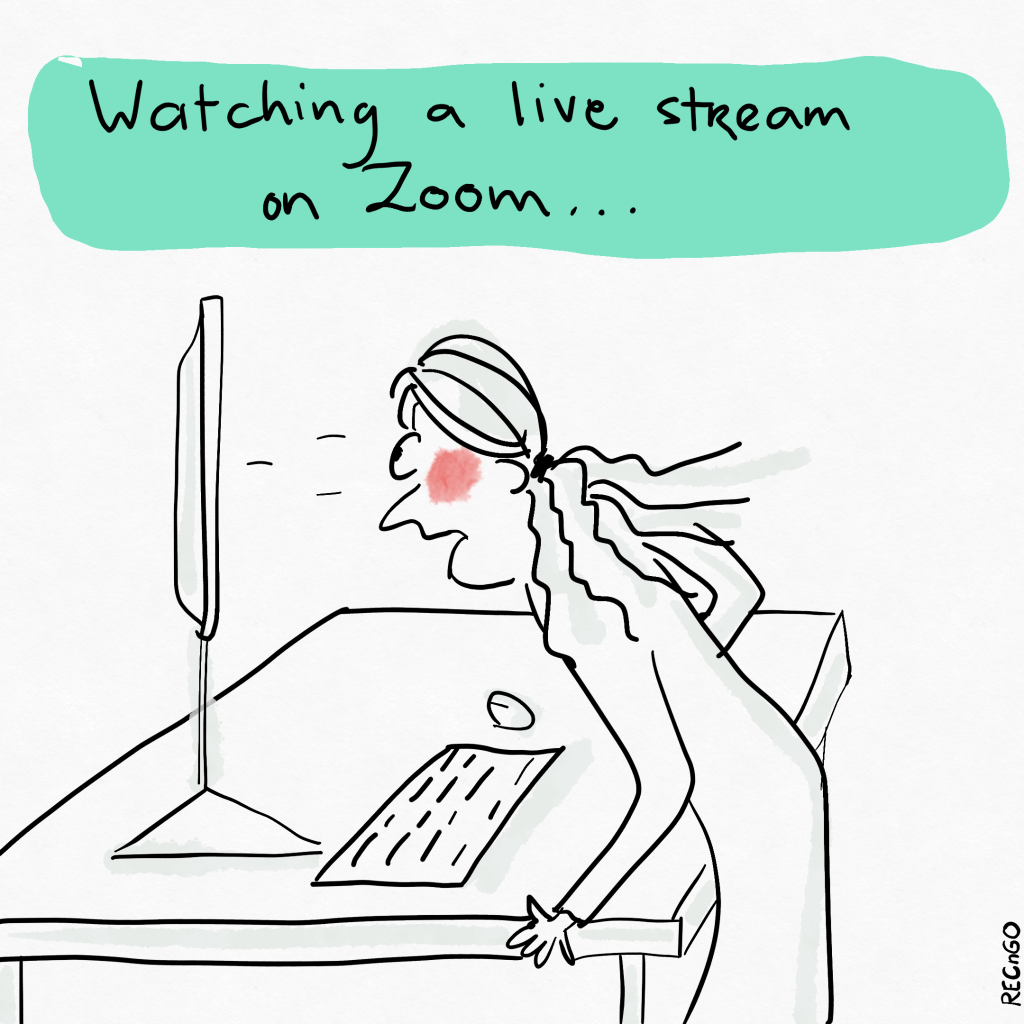
You either “Zoomed” your sessions in terrible quality or streamed to YouTube/Facebook directly with your mobile in 720p (hopefully at least putting the phone on a tripod, so it’s not shaky)…
… or if you had some decent kit & patience to endure hours of tutorials on YT, you could go down the OBS route and kitbash everything you had at home…
… only to come back to your setup two weeks later to find OBS did some upgrade and the entire setup needs to be re-configured…

You’d be smart to transition over to live streaming using mobile devices because it’s:
- Cost-effective: Live streaming using a mobile device is typically more cost-effective than using a traditional video camera, as smartphones and tablets are widely available and *relatively* inexpensive – in most cases, you don’t need to purchase additional equipment.
- Portable: Mobile devices are easy to carry around, which makes them a great option for live streaming on the go – extremely useful for live streaming events, concerts, and other activities where a traditional video camera would be impractical, difficult, or just insanely expensive to use.
- Easy to use: Streaming apps for mobile devices are generally easy to use, even for those with humble technical experience. Many apps have simple controls and user-friendly interfaces, which makes it easy to start live streaming quickly and easily.
- Wide Reaching: While you stream on mobile devices and reach a wider audience, your viewers are also watching your live stream on their mobile device (vs. on a computer).
- Interactive: Real-time interaction with the audience helps increase engagement and create a more human experience for your viewers.
- Flexible: Stream from almost any location giving you freedom and flexibility when it comes to choosing where and when to hold an event.
In the coming sections, we’ll cover the essentials of mobile live streaming, so you spend less time on kitbashing with OBS and more time on making streams people love to watch.
General guidelines for buying/borrowing/begging (quality) kit for your live stream

When it comes to mobile devices that are suitable for live streaming, smartphones and tablets are the most commonly used options.
(Obviously. Cos no one’s going to stream from the Apple Watch. Duh).
Smartphones
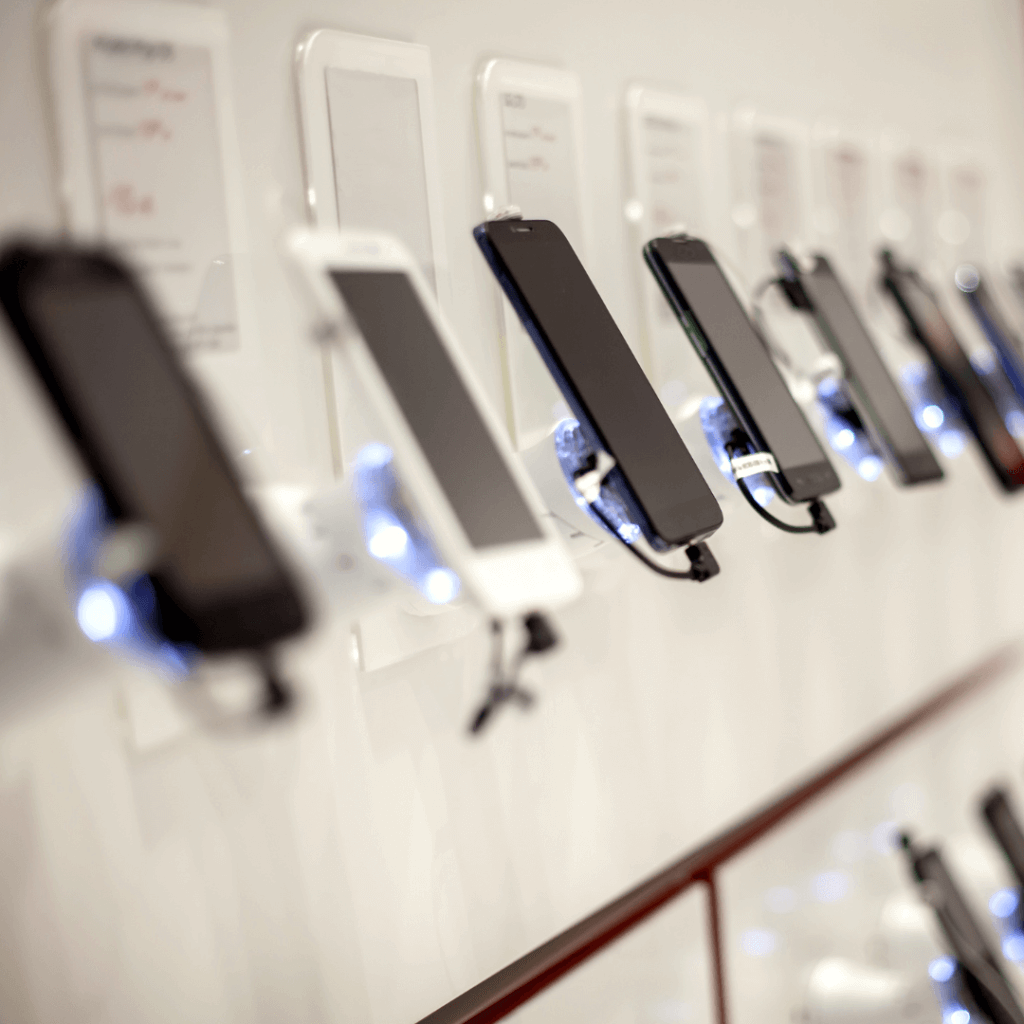
High-end smartphones such as the Apple iPhone, Samsung Galaxy, Google Pixel, OnePlus, and others have built-in cameras that are suitable for live streaming.
These smartphones have powerful processors, high-resolution cameras, and good low-light performance which makes them ideal for live streaming.
Tablets

Tablet devices such as iPad Pro, Samsung Galaxy Tab S, Huawei and Google Tablets are also suitable for live streaming.
These devices have larger screens and improved cameras compared to regular tablets. They have powerful processors and good low-light performance, which makes them a good option for live streaming.
The minimum technical requirements for a mobile phone or tablet to be able to manage a live stream varies depending on the platform or app you’re using to live stream, as well as the quality of the stream you’re looking to achieve.
Here are some general guidelines to consider for your device:
Operating System
iOS 11 or later, Android 11 or later.
Processor
Qualcomm Snapdragon (or similar) or Apple A-series chip will be able to handle the demands of live streaming better than a device with an older or less powerful processor.
RAM
At least 3GB of RAM. 4-6 RAM preferred and will take care of you in 2024, too.
Storage
At least 64GB to store the stream data. 128GB preferred and will be useful in a couple of years’ time.
Camera
At least 12MP or higher – the more pixels it has, the better the quality of the video is. Also, good low-light performance is important for live streaming.
Network
A stable and fast internet connection to handle the demands of live streaming. 4G and 5G networks are suitable for live streaming. You should have at least a few bars of service in most cases.
Battery
Large battery capacity, or at least 4000 mAh – live streaming can be taxing on battery life (*device dependent).
Camera
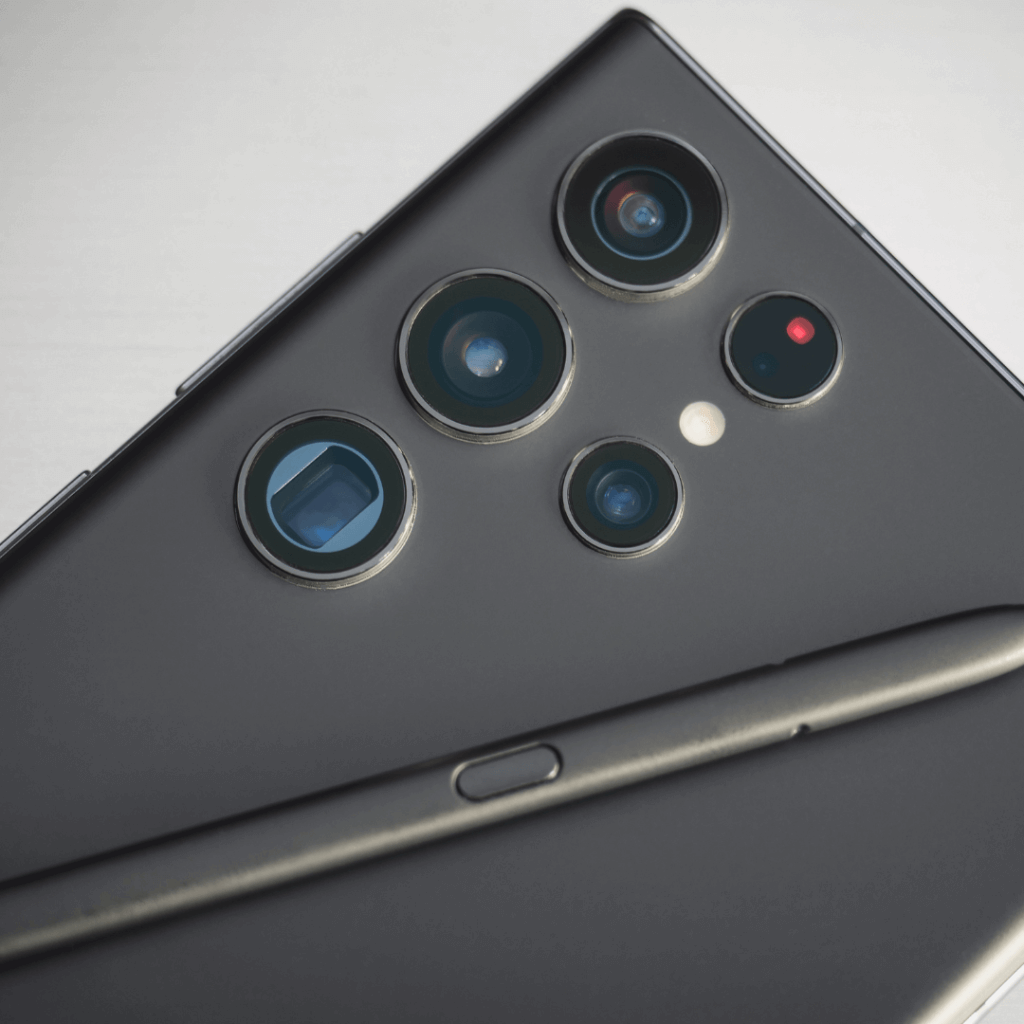
Having a high-quality camera on your mobile device is important for live streaming for several reasons, as these are more likely to provide you with:
- Image quality: clearer, sharper, and more detailed images than a low-quality camera – viewers will expect a clear and high-quality image.
- Low-light performance: Good low-light performance is crucial in live streaming as it allows you to stream in dimly lit or poorly lit environments – a camera with high-quality sensors and lens will perform better in low-light conditions.
- Flexibility: more flexibility for adjusting the settings and shooting in different lighting conditions – you’ll get the most out of your live streaming setup and produce high-quality content, regardless of the environment.
- Zoom capabilities: optical zooms can be used to get closer to the subject – useful in live streaming scenarios where you want to show a specific object or person in more detail.
- Color reproduction: better color reproduction makes the video more vibrant and pleasing to the eye – helps to capture the mood and atmosphere of the live stream.
In addition to the technical aspects of the camera, it’s also worth noting that a high-quality camera can also provide more creative options for videographers.
For example, a high-end camera may have features such as manual exposure or manual focus, which can be useful when looking to achieve a certain look or feel in a live stream.
It’s important to keep in mind that while a high-quality camera is important, it’s not the only factor that determines the overall quality of the live stream.
A high-quality camera will produce a better image, but other factors such as lighting, audio, and internet connection also play a key role in determining the final quality of the live stream.
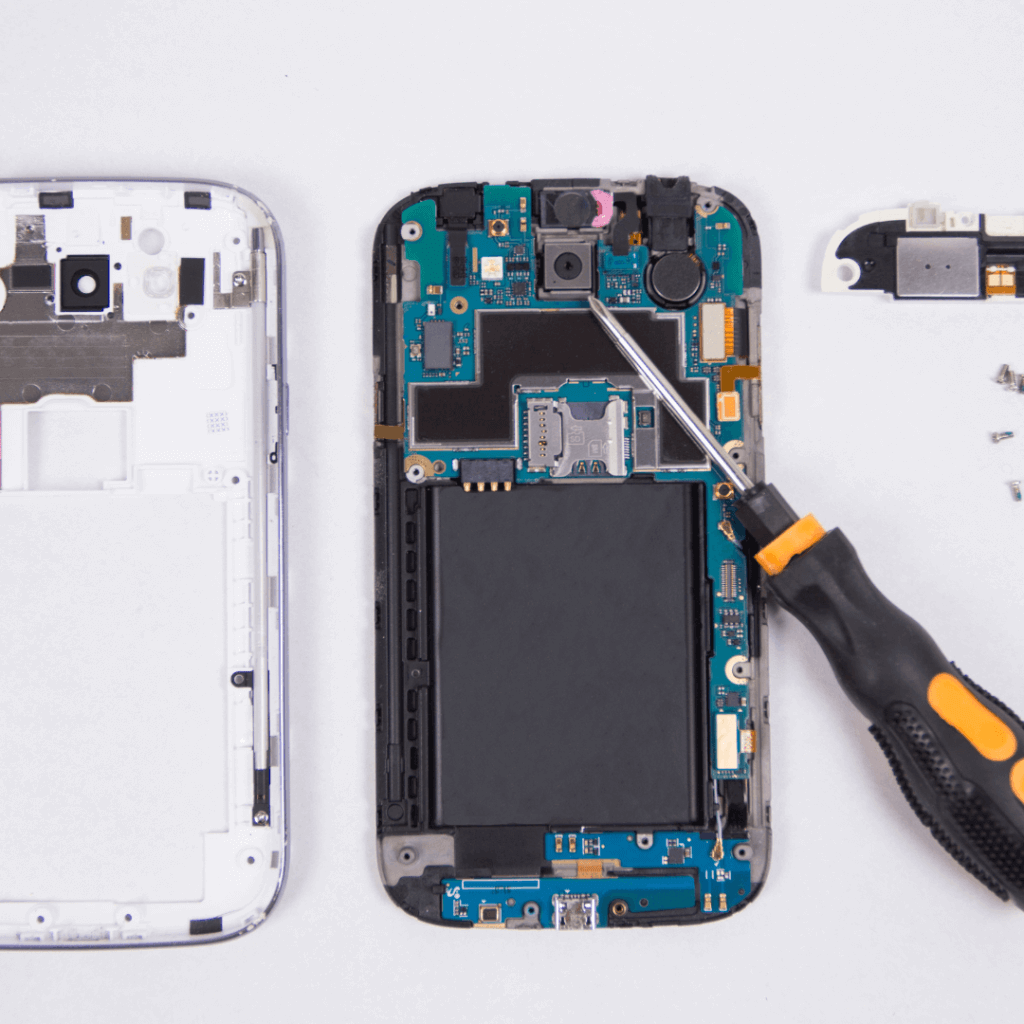
When it comes to camera specs, some of the key features to look for are:
- Resolution: A high-resolution camera, at least 12 MP or higher, is recommended for live streaming. This will ensure that the video is sharp and detailed.
- Low-light performance: The ability to perform well in low-light conditions is crucial for live streaming. Look for devices with high-quality sensors and lenses that can perform well in dimly lit or poorly lit environments.
- Focal Length: A wide-angle lens allows for more flexibility in terms of framing and composition, which can be useful in live streaming scenarios.
- Aperture: A low aperture (f/1.8 or lower) allows more light to enter the lens, which can be beneficial in low-light conditions.
- Autofocus: A fast and accurate autofocus system allows you to quickly and easily focus on the subject of the live stream, which can be useful when filming in fast-moving or unpredictable scenarios.
- Image stabilization: A camera with built-in optical image stabilization can help to reduce camera shake and produce smooth and stable video, even when moving the camera around.
Tripod
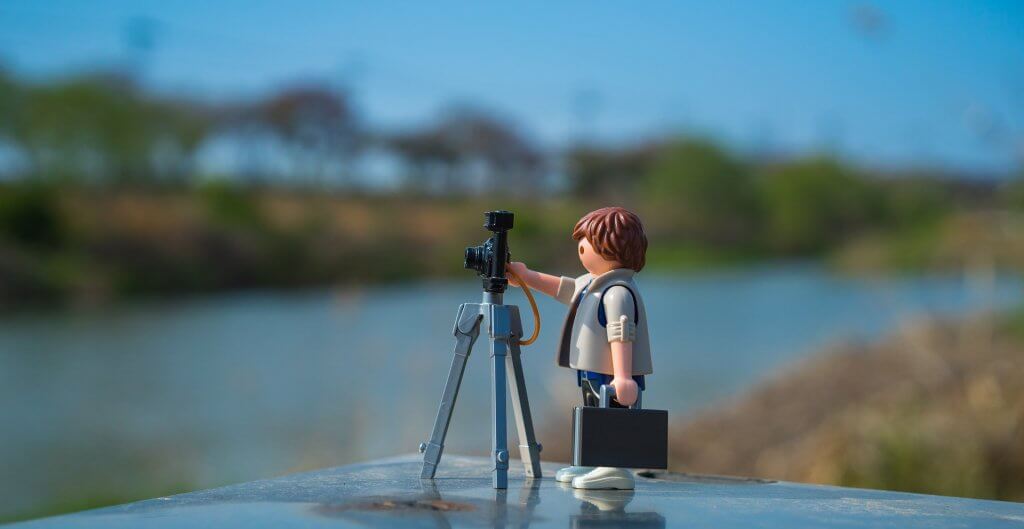
Tripods are an essential piece of equipment for live streaming with mobile devices because they provide a stable base for your camera, allowing you to get smooth, steady shots.
There are a few different types of tripods that are well-suited to mobile devices, each with its own unique features and benefits.
Tabletop tripods
These are small, lightweight tripods that can be placed on a flat surface, such as a table or countertop. They’re great for situations where space is limited, such as when you’re live streaming from a small room or on the go. Some tabletop tripods even have built-in clamps or holders to keep your mobile device securely in place.
Clamp mounts
These are similar to tabletop tripods, but instead of having a fixed base, they clamp onto a surface such as a table or a door. This allows for more flexibility in setting up the shot as the tripod can be mounted on uneven surfaces and can also be attached to vertical surfaces.
Flexible tripods
These are more portable than traditional tripods. They are made of flexible, bendable legs that can be wrapped around objects, making them easy to attach to trees, poles, or railings. This can make for some more unique and interesting angles for the live stream.
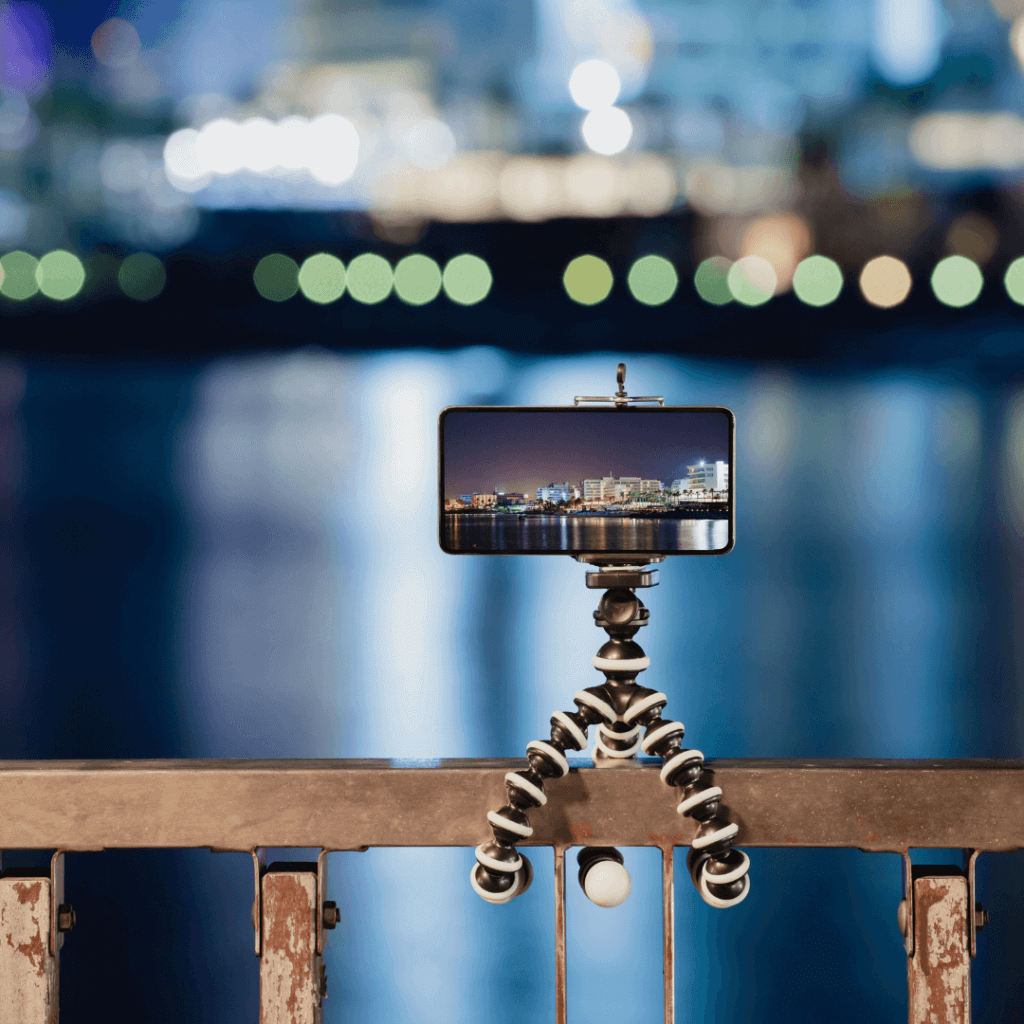
Full-sized tripods
These are traditional tripods that can be extended to eye level and are typically used by professional videographers. These tripods are sturdy and can handle heavier cameras, but they are also larger and heavier, making them less portable.
When choosing a tripod for your mobile device, consider the weight and size of your device and the type of shots you’ll be taking.
For example, if you’re live streaming on the go, a lightweight, portable tripod would be a better choice than a larger, heavier tripod.
Additionally, it’s important to ensure that the tripod’s holder or clamp is compatible with your mobile device.
It’s also worth noting that where possible, you should go for the specialized mobile device tripods with holders and clamps designed specifically for smartphones or tablets. These can be a good option to consider as they are typically tailored to provide a better fit and hold the device securely.
External microphone
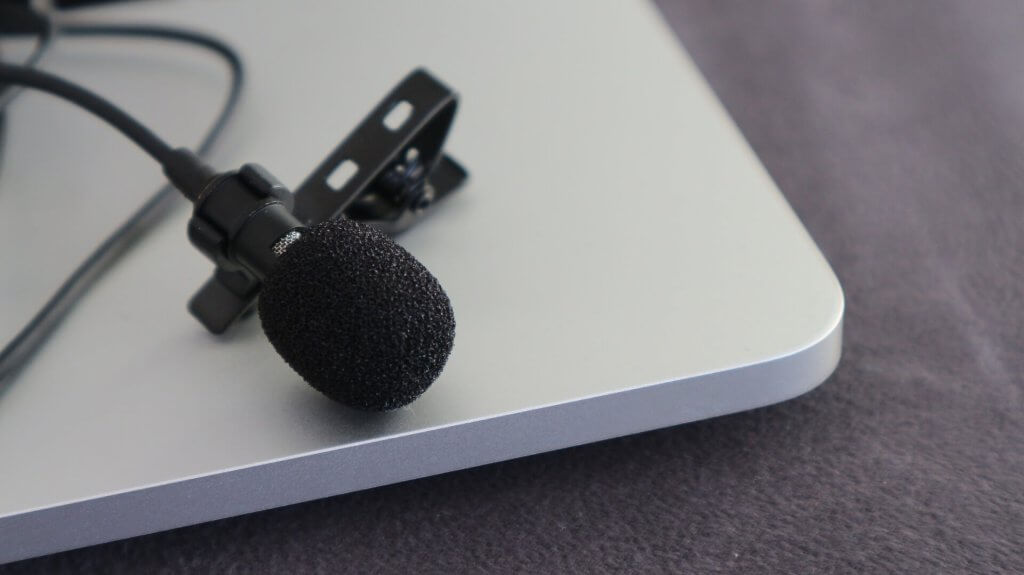
External microphones for mobile devices come in different formats, and you should choose them depending on the space you’re going to be in at the time of the recording/streaming.
Lavalier microphones
These are small, clip-on microphones that can be attached to clothing. They’re great for capturing audio from a specific source (e.g., a person speaking) and can be particularly useful for interviews or presentations. However, they can be prone to picking up the background noise.
Handheld microphones
These are self-contained microphones that can be held in hand. They’re ideal for capturing audio in a moving or dynamic environment, such as a live event or concert. They can also be useful for vlogging or video blogging.
Boom microphones
Boom mics are typically used in professional production and are held on an extendable boom pole. They allow you to get closer to the sound source and have a unique directionality and ability to reject unwanted noise. They’re typically more expensive and require more skill to operate.

When looking for an external microphone for your mobile device, it’s important to check that the microphone is compatible with your device and that it has a TRRS (tip, ring, ring, sleeve) connector, which is typically used to connect external microphones to mobile devices. Some external microphones have adapters that can convert between TRRS and TRS (tip, ring, sleeve) connectors.
Another important thing to consider is the microphone’s polar pattern or directionality, which can either be omnidirectional, unidirectional, or bi-directional.
Omnidirectional microphones pick up sound from all directions and can be useful in situations where you need to capture ambient sound.
Unidirectional microphones are designed to pick up sound primarily from one direction, which can be helpful in reducing background noise.
Bidirectional microphones pick up sound from the front and back, which can be useful for interviews or conversations.
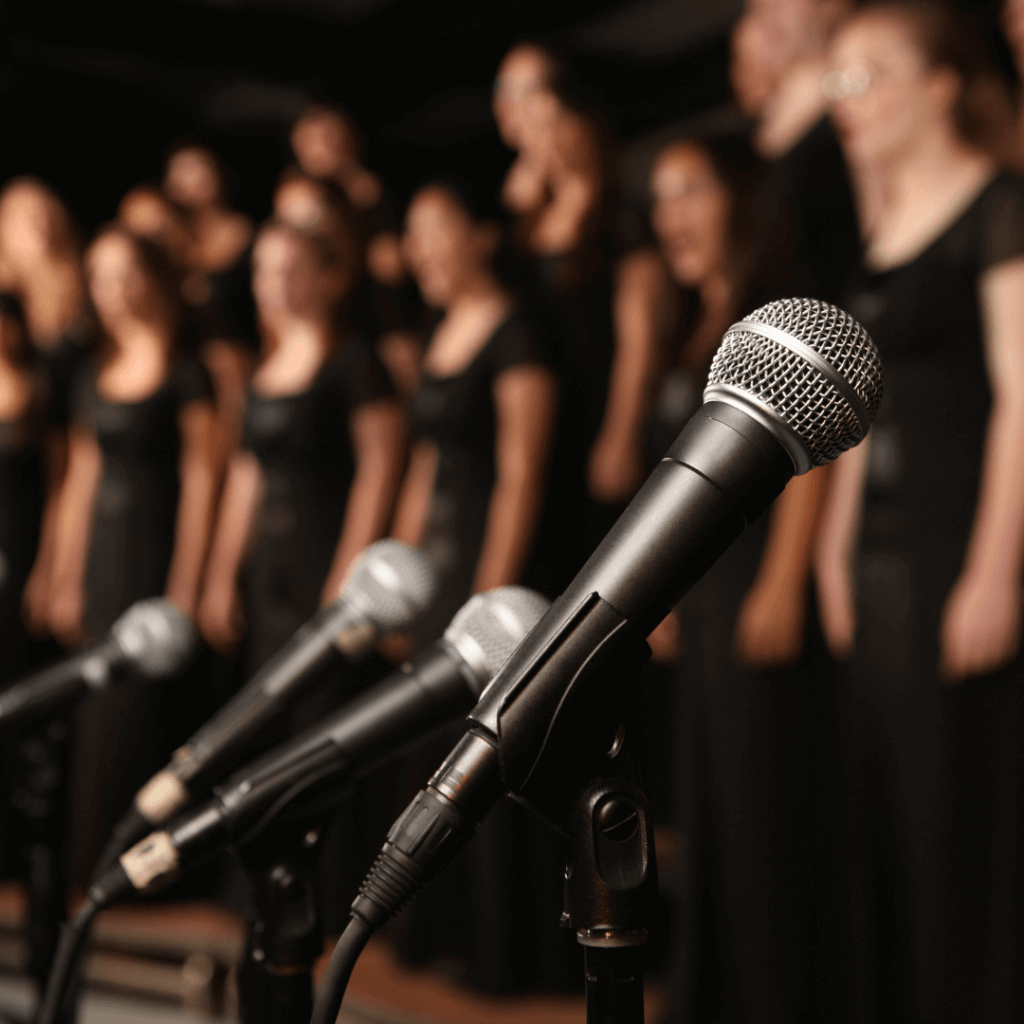
In addition to that, you’ll also want to consider the sensitivity and frequency response of the microphone, which will determine how well the microphone captures different types of audio.
Typically, microphones with higher sensitivity and broader frequency response will be able to capture more detailed and accurate audio.
Lighting

Good lighting is essential for creating a high-quality live stream, as it can greatly impact the overall look and feel of the video.
Poor lighting can make the video appear dark, grainy, and unappealing, while good lighting can make the video appear bright, clear, and engaging.
There are a few different types of lighting equipment that can be used with mobile devices to improve the overall look of your stream:
- Ring lights: these circular lights surround the lens of the camera. They provide a soft and even light that can help to reduce shadows and create a flattering, professional-looking image. Ring lights can be especially useful for live streaming scenarios where the lighting is poor or uneven.
- Portable LED panels: easily mounted on a tripod or other support, they are lightweight, easy to transport, and have a high power output. They can provide a good balance of light and can be adjusted to match the room’s lighting.
- Softboxes: boxes with a diffused light source inside provide a soft, even light that can help to reduce shadows and create a flattering image. Ideal live streaming scenarios where the lighting is poor or uneven.
- Reflectors: redirect the available light to the subject. They can be used to fill in shadows and create a more balanced image. Reflectors come in different colors to match the color of the light and can be used to enhance the natural light or to balance the light between the subject and the
Live streaming platforms and apps
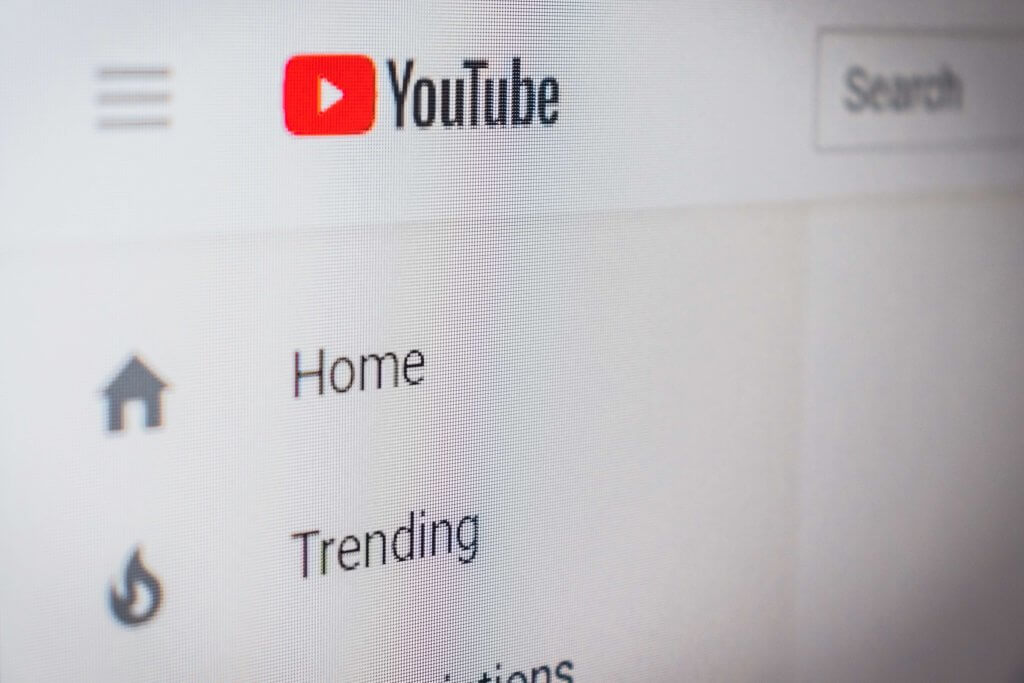
These can be broadly classified into three main categories: browser-based, mobile-only, and hybrid.
- Browser-based software: These are live streaming apps that run on a web browser, such as Chrome, Firefox, or Safari. They can be accessed from any device with a web browser and an internet connection. Examples of browser-based live streaming platforms include YouTube Live, Facebook Live, and Twitch. These platforms are typically more versatile and can be used to stream from a wide range of devices, including desktops, laptops, and mobile devices.
- Mobile-only apps: These are live streaming apps that are designed to run on mobile devices only. They can be downloaded from the App Store or Google Play Store and can be used to stream directly from a mobile device. Examples of mobile-only live streaming platforms include Periscope, TikTok Live, and Instagram Live. The advantage of the streaming apps that stream to these platforms is that your system is more portable and can be used to stream from anywhere, as long as you have a mobile device and an internet connection.
- Hybrid solutions: These are live streaming apps that can run on both mobile devices and web browsers. They can be accessed from any device with a web browser and an internet connection, but also have mobile apps that can be downloaded from the App Store or Google Play Store. Examples of hybrid live streaming platforms include Zoom, Skype, and Google Meet.
What’s a live video studio? Why do I need one?
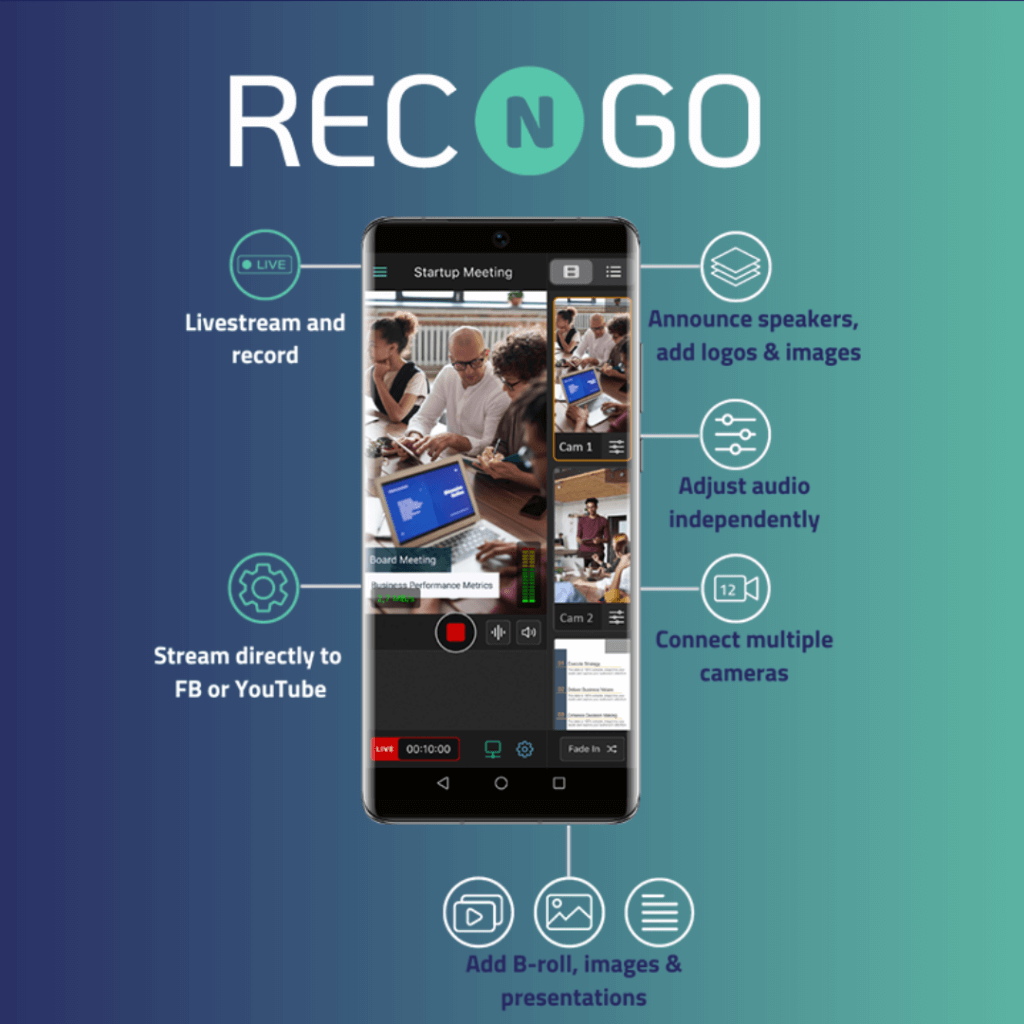
Strictly speaking, you do not *need* one.
At all.
If you’re happy to go live on TikTok, Facebook, or YouTube just by pressing the red live button – do that.
But if you’d like to give your viewers a more exciting production and brand your live streams and recordings, you’ll need *something* where you can edit your stream live.
For example, you may want to add your logo to the screen while you’re speaking live.
Adding a logo via a direct Facebook live stream is not possible.
You want to add your name and title as you speak…?
… the name of your product or service?
… a link to your website?
You’ll need to use a live video studio app that lets you add images, b-rolls, text, and other creatives.
Next steps

Once you’ve identified the hardware you need for your office or home setup, we recommend trying various live streaming platforms and live video studio apps and going with the one you feel most comfortable with (UX, UI, price, reliability, customer support, etc.).
RECnGO is a live video studio app specifically designed for live streaming on mobile devices. It offers a variety of features, such as low latency, high-quality video, and easy-to-use controls.
The app is also optimized for mobile devices (iOS, Android & Huawei), which means that it can be used to stream from anywhere at any time, making it a great option for on-the-go live streaming.
Whether you’re a brand, a YouTuber, a professional videographer, or just starting to build your personal brand, live streaming with mobile devices and the RECnGO app can be a great way to expand your creative options and reach new audiences.
You can download the RECnGO live video studio app for FREE today and try recording and streaming with multiple camera angles and text layers – you’ll love the minimal learning curve and the instant wow factors you can add to your live streams and recordings.
One Response